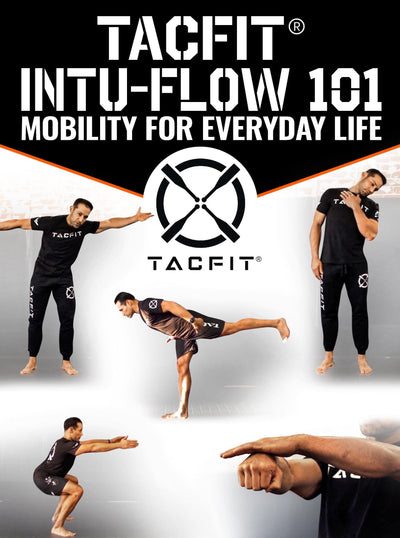Kettlebell Lunges Muscles Worked
When it comes to a well-rounded fitness routine, it's crucial to incorporate exercises that target multiple muscle groups simultaneously. Enter kettlebell lunges—a dynamic movement that engages various muscles in your lower body, core, and upper body. Whether you're a fitness enthusiast or an athlete looking to improve performance, understanding the muscles worked during kettlebell lunges can help you maximize the benefits of this fantastic exercise. In this blog post, we'll explore the primary muscles targeted by kettlebell lunges and discuss the benefits of incorporating them into your workout routine.
What this article covers:
- Kettlebell Walking Lunge
- Kettlebell Lateral Lunge
- Kettlebell Curtsy Lunge
- Kettlebell Overhead Lunge
- Kettlebell Goblet Walking Lunge
Quadriceps:
The quadriceps, a group of muscles at the front of your thigh, play a significant role in kettlebell lunges. As you step forward into a lunge position, the quadriceps work to extend your knee and stabilize your lower body. The deep activation of these muscles not only strengthens and tones your quads but also improves your overall leg strength and power.
Glutes:
Kettlebell lunges heavily engage the gluteal muscles, particularly the gluteus maximus. As you push through your front heel to return to the standing position, your glutes contract forcefully to extend the hip joint. Strengthening these powerful muscles not only helps to shape and lift your buttocks but also improves your hip stability, enhances athletic performance, and reduces the risk of injuries in the lower back and knees.
Hamstrings:
The hamstrings, located at the back of your thigh, are also involved in kettlebell lunges. During the exercise, the hamstrings work to control the movement and decelerate the forward motion of your body. By providing stability to the knee joint and controlling the rate of descent, the hamstrings contribute to building strength, improving flexibility, and reducing the risk of hamstring strains.
Calves:
The calf muscles, including the gastrocnemius and soleus, are active during kettlebell lunges. When you step forward and descend into the lunge, your calf muscles work to control the movement and stabilize your ankle joints. This engagement not only helps strengthen and define your calves but also improves ankle stability, which is vital for balance and performance in various sports and activities.
Core:
The core muscles, including the abdominals, obliques, and erector spinae, play a crucial role in maintaining stability and balance during kettlebell lunges. As you hold the kettlebell in a racked position close to your chest, your core muscles engage to stabilize your spine and prevent excessive forward or lateral flexion. The lunge movement, combined with the resistance from the kettlebell, challenges your core muscles to develop strength, endurance, and stability.
Upper Body (Deltoids and Biceps):
While kettlebell lunges primarily focus on the lower body, they also engage the upper body muscles to a certain extent. Holding the kettlebell in the racked position activates the deltoid muscles of your shoulders, particularly the anterior deltoid. Additionally, the biceps are engaged as you grip and hold the kettlebell securely during the exercise.
Here is a breakdown of complementary exercises you can include with your lunges to gain a complete lower body workout!
Kettlebell Walking Lunge
The kettlebell walking lunge is a variation of the traditional lunge exercise that adds an extra challenge to your lower body and core. Holding a kettlebell in each hand, you perform a forward lunge while simultaneously walking forward. This movement engages the quadriceps, glutes, hamstrings, calves, and core muscles as you dynamically stabilize and propel your body forward. The walking aspect increases the demands on your balance and coordination, making it an excellent exercise for functional strength and enhancing overall athleticism.
Kettlebell Lateral Lunge
The kettlebell lateral lunge is a lateral movement that targets the inner and outer thighs, glutes, hamstrings, and core muscles. Holding a kettlebell with both hands in front of your chest, you step out to the side, bending the knee and lowering your body into a lunge position. This exercise helps to strengthen the muscles responsible for side-to-side movements, improving stability, balance, and agility. The added resistance from the kettlebell challenges your muscles further, leading to increased strength gains.
Kettlebell Curtsy Lunge
The kettlebell curtsy lunge is an effective exercise for targeting the glutes, inner and outer thighs, and quadriceps. Holding a kettlebell in one hand, you perform a curtsy-like movement by crossing one leg behind the other and bending both knees into a lunge position. This movement activates the hip abductors and adductors, promoting balanced development of the lower body. The kettlebell adds an additional load to the exercise, enhancing muscle activation and increasing the difficulty level.
Kettlebell Overhead Lunge
The kettlebell overhead lunge is a challenging variation that not only engages the lower body but also adds an upper body strengthening element. Holding a kettlebell overhead with one arm, you perform a forward or reverse lunge. This exercise targets the shoulders, triceps, upper back, core muscles, as well as the quadriceps, glutes, and hamstrings. The overhead position requires increased shoulder stability and core strength, making it an excellent exercise for improving overall muscular strength and stability.
Kettlebell Goblet Walking Lunge
The kettlebell goblet walking lunge combines the benefits of the walking lunge with the added challenge of a kettlebell goblet hold. Holding a kettlebell with both hands at chest level, you perform walking lunges, stepping forward and lowering your body into a lunge position. This exercise targets the quadriceps, glutes, hamstrings, calves, and core muscles, while also improving grip strength and upper body stability. The goblet hold position increases the demand on the core and upper body, making it a fantastic full-body exercise for strength and stability.
Incorporating these kettlebell lunge variations into your training routine can bring variety and intensity to your workouts, ensuring that you engage different muscle groups and challenge your body in various planes of movement. Remember to start with lighter kettlebell weights and focus on proper form to maximize the benefits and reduce the risk of injury. So, grab a kettlebell and explore the versatility of these kettlebell lunge variations for a stronger, fitter, and more functional you.
Kettlebell lunges offer a myriad of benefits for those seeking a challenging and effective total body workout. By targeting multiple muscle groups simultaneously, including the quadriceps, glutes, hamstrings, calves, core, and even the upper body to a lesser extent, kettlebell lunges provide a well-rounded training stimulus. Incorporating this exercise into your fitness routine can improve lower body strength, enhance muscle tone, increase stability, and boost athletic performance. Remember to start with lighter kettlebell weights and focus on maintaining proper form to reap the full benefits of this powerful exercise. So, grab a kettlebell, step forward, and embark on your journey to total body conditioning with kettlebell lunges!
Did you find the blog helpful? If so, consider checking out other guides:
- Kettlebell Lunges
- The Kettlebell Side Lunge
- The Kettlebell Reverse Lunge
- Kettlebell Lunge Press
- Kettlebell Thruster
- Kettlebell Squat Thrust
- Kettlebell Thrust
- Banded Kettlebell Hip Thrust
- The Kettlebell Ballistic Row
- Bent Over Kettlebell Row
- Kettlebell Push Up with Row
- Kettlebell Inverted Row
- Kettlebell Snatch Muscles Worked
- Double Kettlebell Snatch
- Kickstand Deadlift Kettlebell





